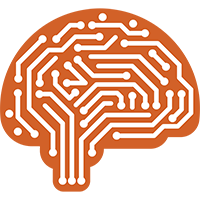RISE 2030 – Research Excellence

Critical Success Factors
The Texas ECE strategic vision for research has three key aims: (1) aligning our research portfolio with critical needs and impact areas; (2) innovating our research approaches; and (3) engaging our broader community towards enhancing the quality, impact and visibility of our research and researchers.
Strategic Research Thrusts
Texas ECE has maintained its position as a research leader in advancing the underlying science and technology in a broad set of high-impact areas. In order to continue to uphold this position, we aim to further leverage our current strengths while expanding our research portfolio in emerging research areas. Below, we list our research interests that align with the most impactful problems of the next decade.

Applied Artificial Intelligence and Machine Learning
Systems for ML and ML for Systems, including efficient and sustainable systems for AI/ML applications and AI/ML for enabling next generation systems.
AI/ML applications, including robotics and embodied AI, as well as the use of foundation AI models for democratized access and enabling artificial general intelligence.

Cybersecurity, Privacy, and Blockchain
Digital trust enablement, including IoT security, data protection, cryptography, trustworthy computing, and security aspects in communications, networks, and blockchain technologies.

Human-Centered Electrical and Computer Engineering
Tools and technology advancing human well being, including health care and medical applications, brain-machine interfaces, neuro-engineering, enhanced human imaging technologies, as well as wearable technologies, infrastructure, and health related data for precision medicine.

Intelligent Communications, Sensing, and Cloud/Edge Infrastructure
Sustainable edge to cloud computing and communication, including efficient immersive technologies (XR/AR/VR), sensing technologies, sustainable cloud-based computing infrastructure, and heterogeneous computing platforms.

Semiconductor and Quantum Technologies
New semiconductor materials and manufacturing processes, including unconventional computing methodology for more efficient chips, wide and ultra-wide bandgap semiconductors for high speed and high-power electronics, codesign memory, logic, power delivery, photonics and heterogeneous integration of a wide range of functions on-chip.
Quantum technologies, including quantum computing, communication, and sensing systems and their applications.

Next-Generation Energy Infrastructure
Environment-aware energy systems, including advanced power electronic devices and components, smart grid design, renewable resources for energy generation, transmission, and distribution.
Collaboration and Research Infrastructure
Prioritize multidisciplinary research collaborations by adopting multidisciplinary approaches to address complex challenges, fostering a culture of, and developing faculty experience with, innovative collaborative research, providing access to innovative tools and infrastructure that can be expensive to acquire and maintain, and identifying and funding a shared and sustainable research infrastructure, including equipment, facilities, and personnel.
Coordinated Engagement and Visibility
Promote coordinated engagements with and outreach to industry, government, foundations, and the general public by developing a joint high-impact research vision to reach out to and collaborate with industry/government agencies, facilitating flexible and timely consortia and/or industry-affiliate programs, enabling faculty to spend time in industry and bringing in industry researchers, and intensifying our efforts in communicating the value of our work and enhancing the visibility and recognition of our faculty.
Initiatives and Programs
Hiring in strategic and emerging areas
Develop creative ways to coordinate and enhance our efforts towards recruiting researchers and faculty from strategic and emerging areas, such as through the creation of innovative research hubs.
Investing in shared research infrastructure
Identify new opportunities for shared research infrastructures that can benefit our core research teams and foster new research collaborations (e.g. establishing a state-of-the-art holistic fab and characterization facility that would also serve quantum information processing science and other relevant research areas).
Consortia and industry engagement
Explore opportunities to grow our research centers and/or initiate new research consortia in our department, such as ones focused on energy and renewables or technologies for healthcare.
Mentoring and support for faculty research success and recognition.
Promote faculty visibility and recognition by professional societies and the broader communities.
